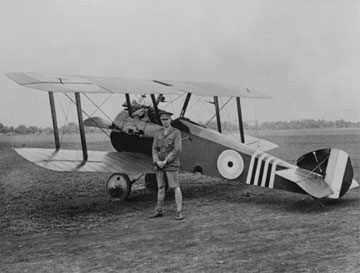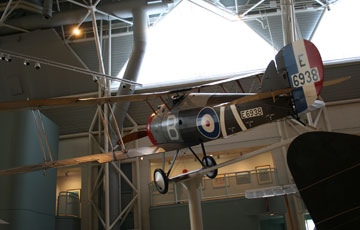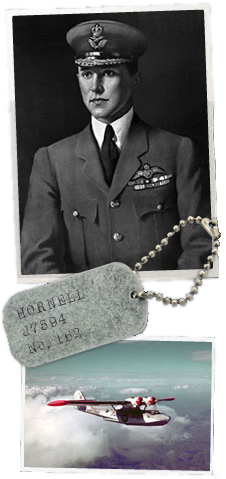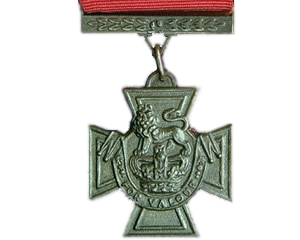William Barker
Tools of War
Lieutenant-Colonel Barker’s extensive service in the RAF meant that he flew a number of different aircraft. The following are among those Barker was known to have flown, in the order he would have flown them:
Royal Aircraft Factory R.E.8
The Reconnaissance Experimental 8 (R.E.8) was introduced in 1916 as a replacement for the B.E.2, and was used (alongside the Armstrong Whitworth F.K.8) by the RAF for the remainder of the First World War. It featured a more powerful engine which helped increase the bomb payload it could carry. It was also more heavily armed – a .303 inch Vickers machine gun on the front and Lewis guns on a Scarff ring that the observer would fire.
The lack of maneuverability made the R.E.8 unpopular among many pilots, and planes still in operation at the time of the armistice were retired.

Sopwith Camel
Many of William Barker’s incredible victories happened while he was at the helm of Sopwith Camel B6313. His first experience flying a Sopwith Camel fighter was in the fall of 1917, when he had been sent back to England to train pilots. His first mission as a pilot in a combat environment was in a Camel on October 20 of that year.
The plane was far more agile than the R.E.8, but was also somewhat difficult to handle. Despite heavier armament than the Pup, its predecessor, the Camel’s controls were quite sensitive; it could loop and turn to the right quickly (left turns were tougher because of the rotary engine). The popular F.1 version of the Camel was equipped with twin synchronized Vickers guns that fired forward through the propeller.
Sopwith Camels were the most successful aircraft of the Allied fighters, and Barker’s the most successful in the history of the RAF. Forty-six of his 50 victories were accomplished in B6313, and in a one-year period Barker amassed dozens of victories in this Camel before it was dismantled in October 1918.
Bristol F.2 Fighter
Often known as the “Brisfit” or “Briff”, this nimble two-seater served the RAF from mid-1917 until the early 1930s. Armed with a forward-firing synchronized 0.303 inch Vickers machine gun as well as one or two 0.303 inch Lewis guns in the observer’s space, the Bristol F.2 could also carry over 200 pounds of bombs. Barker’s No.139 Squadron flew the Bristol F.2 fighters, and while Barker himself flew some missions in the F.2, he preferred the Sopwith Camel.

Sopwith Snipe
Introduced into action in September 1918, the Snipe saw action for a short period of time near the end of the Firtst World War. Bigger, heavier and more durable than the Camel, the Sopwith Snipe was also easier to maneuver, and offered the pilot of this one-seater better visibility. Like the Camel, the Snipe carried two 0.303 inch Vickers machine guns, but could also carry 100 pounds of bombs.
Barker’s October 27, 1918 flight for which he was awarded the Victoria Cross was in the cockpit of a Sopwith Snipe.











